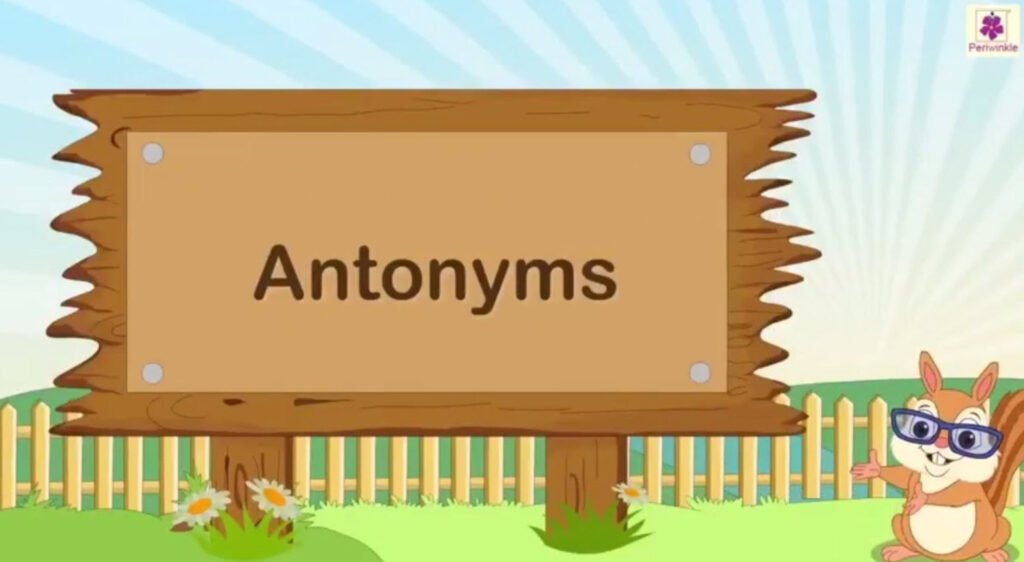Antonyms, or opposites, are words that have contrasting meanings. Understanding antonyms is fundamental to comprehending the nuances of language and communication.
Here, we explore some basic antonyms, providing examples and illustrating their essential role in expressing opposing concepts.
1. Never – Always
“Never” and “always” are fundamental antonyms representing absence and presence, respectively. “Never” signifies not at any time or under any circumstance, whereas “always” implies at all times or on every occasion.
Example:
– She never arrives early.
– He always finishes his work ahead of time.
2. Late – Early
“Late” and “early” pertain to time and denote the opposite ends of punctuality. “Late” signifies occurring after the expected or usual time, while “early” refers to something occurring before the expected or planned time.
Example:
– He arrived late for the meeting.
– She woke up early to start her day.
3. Less – More
“Less” and “more” express opposite quantities or degrees. “Less” refers to a smaller amount or degree, while “more” signifies a greater amount or degree.
Example:
– She ate less food today.
– He wanted more dessert.
4. Male – Female
“Male” and “female” represent the two primary genders in biological terms. “Male” refers to the sex associated with masculine characteristics, while “female” refers to the sex associated with feminine characteristics.
Example:
– He is male, and she is female.
5. Happiness – Sadness
“Happiness” and “sadness” represent opposite emotional states. “Happiness” signifies a feeling of joy, contentment, or delight, while “sadness” refers to a state of sorrow, unhappiness, or grief.
Example:
– Winning the game brought them happiness.
– The news of her friend’s illness brought her great sadness.
6. Fast – Slow
“Fast” and “slow” are antonyms related to speed. “Fast” indicates a high speed or quick movement, while “slow” denotes a low speed or a leisurely pace.
Example:
– The car was moving fast on the highway.
– He walked at a slow pace.
7. Old – Young
“Old” and “young” represent opposite stages of age or maturity. “Old” refers to being advanced in age or having existed for a long time, whereas “young” signifies being in an early stage of life or development.
Example:
– She is young and energetic.
– He is old and wise.
8. Boy – Girl
“Boy” and “girl” are antonyms that describe gender during childhood or early stages of life. “Boy” refers to a male child, while “girl” refers to a female child.
Example:
– They have a boy and a girl in their family.
9. Up – Down
“Up” and “down” are spatial antonyms describing opposite directions in terms of elevation. “Up” indicates a higher position, while “down” signifies a lower position.
Example:
– The elevator went up to the top floor.
– She walked down the stairs.
10. Left – Right
“Left” and “right” are antonyms describing opposite directions in a horizontal plane. “Left” refers to the side opposite to the right, and “right” refers to the side opposite to the left.
Example:
– Turn left at the intersection.
– The car is parked on the right side.
11. Rich – Poor
“Rich” and “poor” are antonyms concerning financial status. “Rich” signifies having a significant amount of wealth or resources, while “poor” indicates a lack of sufficient financial resources.
Example:
– He is rich and can afford a luxurious lifestyle.
– They are a poor family struggling to make ends meet.
12. Love – Hate
“Love” and “hate” represent opposing emotions. “Love” signifies deep affection, care, or fondness, while “hate” refers to intense dislike, hostility, or aversion.
Example:
– She loves spending time with her family.
– He hates conflicts and arguments.
13. Inside – Outside
“Inside” and “outside” pertain to location or position. “Inside” refers to within or the inner part, while “outside” signifies the exterior or outer part.
Example:
– The keys are inside the drawer.
– They are playing outside in the garden.
14. Bad – Good
“Bad” and “good” represent opposite evaluations of quality or morality. “Bad” indicates something of low quality or morally wrong, while “good” signifies something of high quality or morally right.
Example:
– He had a bad experience at the restaurant.
– She received good feedback for her performance.
15. Short – Tall
“Short” and “tall” describe opposite heights or lengths. “Short” refers to a lack of height or length, while “tall” signifies a significant height or length.
Example:
– She is short compared to her brother.
– He is tall and stands out in the crowd.
16. Close – Open
“Close” and “open” describe opposite states of closure. “Close” indicates shutting or sealing, whereas “open” signifies allowing access or not sealed.
Example:
– Please close the door when you leave.
– Keep the door open for fresh air.
17. Man – Woman
“Man” and “woman” are antonyms related to gender. “Man” refers to an adult male, while “woman” refers to an adult female.
Example:
– He is a man with a strong work ethic.
– She is a woman of great determination.
18. Dim – Bright
“Dim” and “bright” describe opposing levels of light or visibility. “Dim” refers to a low level of light or visibility, while “bright” signifies a high level of light or visibility.
Example:
– The room was dimly lit.
– The sun shone brightly in the sky.
19. Huge – Tiny
“Huge” and “tiny” represent opposite sizes or dimensions. “Huge” signifies great size or extent, while “tiny” refers to a very small size or extent.
Example:
– The elephant was huge and impressive.
– The puppy was tiny and adorable.
20. Normal – Strange
“Normal” and “strange” represent opposing states of conformity or familiarity. “Normal” refers to conforming to a standard or typical pattern, while “strange” signifies unfamiliar or not conforming to the usual pattern.
Example:
– It’s normal to feel nervous before a big exam.
– The strange noise in the night made them uneasy.
21. Little – Much
“Little” and “much” represent opposite quantities or amounts. “Little” refers to a small amount or quantity, while “much” signifies a large amount or quantity.
Example:
– She has little experience in this field.
– He has much knowledge about the subject.
22. In – Out
“In” and “out” denote opposite directions or positions concerning containment. “In” refers to being inside or within, while “out” signifies being outside or not within.
Example:
– Please put the book in the bag.
– Take the trash out.
23. Hot – Cold
“Hot” and “cold” represent opposite temperatures. “Hot” signifies a high temperature, while “cold” refers to a low temperature.
Example:
– The coffee is hot; be careful.
– It’s cold outside; wear a jacket.
24. Soft – Hard
“Soft” and “hard” are antonyms describing opposite textures or firmness. “Soft” refers to a lack of firmness or malleability, while “hard” signifies a high degree of firmness or rigidity.
Example:
– The pillow is soft and comfortable.
– The table is made of hard wood.
25. Stop – Move
“Stop” and “move” represent opposite actions related to motion. “Stop” signifies ceasing movement or action, while “move” refers to initiating or continuing movement or action.
Example:
– The traffic light turned red, signaling them to stop.
– It’s time to move forward with our plans.
26. Begin – Finish
“Begin” and “finish” represent opposite stages of a process or action. “Begin” refers to starting or initiating something, while “finish” signifies completing or concluding something.
Example:
– They will begin the project next week.
– He worked hard to finish the assignment on time.
Understanding antonyms is crucial for effective communication, enabling precise expression and conveying nuanced meanings. Antonyms provide richness and depth to the English language, allowing speakers and writers to articulate thoughts, emotions, and concepts with precision and clarity.



